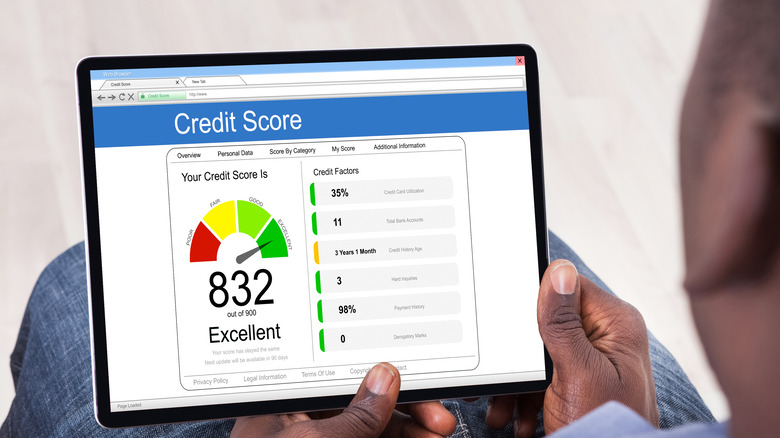The 7 Major Steps To Refinancing Your Mortgage
When you move into a new home, some parts of the process can be kind of fun, such as house hunting, picking out new furniture, deciding what color to paint the walls, and exploring your new neighborhood. But hardly anyone enjoys the hassle and paperwork of securing a home loan. Still, after a few years, the pain starts to fade a bit, and you might be ready to plunge back in again. No, not to buy a new house, but to refinance the mortgage on your current dream home.
There are many reasons to refinance a home mortgage. You can do it to lower your monthly payments or, if your finances improved, to pay off your home loan in less time. You may want to refinance to take advantage of a dip in interest rates, or you may be hoping for a cash-out refinance that will allow you to use your home's equity to fund home improvements, a car, or even a vacation. Even if you own your home outright, you may be interested in a reverse mortgage, which is a type of refinance that grants people 62+ years old an equity-backed loan that won't need to be repaid until the home is sold. Whatever the reason you're refinancing, though, there are several steps you'll need to go through before your new mortgage is a done deal.
1. Determine whether (and when) to refinance
The first step in refinancing a home is one of the most important ones — you'll need to determine whether now is a good time to do it. If the interest rates have increased since you purchased your home, the answer might be, as the Magic 8 Ball would say, "Ask again later." As a rule of thumb, most experts say you should only consider a refinance if you can save 0.75% off your current interest rate, although Credible notes that a savings of 0.5% may be worthwhile if you've still got the better part of 30 years to go on your loan and you plan to stay put for that long.
Another thing to consider is the closing costs because refinancing tends to come at a significant cost. On average, you're likely to pay something in the neighborhood of $5,000. This means that if your new loan rate saves you $100 a month on your home payment, you'll recoup the costs in 50 months, which is a little over four years. If, on the other hand, you're only saving $50 per month, you'll break even in 100 months, or just over eight years. If you think you'll sell your house before you hit the point where your monthly savings kick in, then maybe a refinance isn't such a great idea.
2. Make sure your credit score is sufficient
If you've crunched the numbers and decided that now is a good time to refinance your loan, great! The next thing you'll need to do, though, is to check your credit score. Different types of loans may require different minimum credit scores. If you have an FHA loan, you're in luck since they may be willing to deal with you even if you have a low score of 500. If your loan-to-value ratio (LTV) is low, though, meaning you are seeking a higher loan amount in proportion to your equity, you may need a score of 580.
VA loans can be refinanced with a credit score of 620, while USDA loans require a 640 score. Should you have a conventional loan, however, you may be okay with a score as low as 620 if you have a high LTV as well as a low debt-to-income (DTI) ratio, but if the numbers are not in your favor, your score might need to be as high as 720. Scores still a bit too low? Pay as much debt as possible, and throw a little extra on your monthly mortgage payments. These steps will not only raise your LTV and lower your DTI, but should also positively impact your credit scores.
3. Calculate your home equity
Refinance loans are largely based on the amount of equity you have in your home. Typically, lenders will want you to have at least 20% equity in your home before you refinance. In some cases, if you have an exceptionally high credit score, they may be willing to finance on a lower amount, but in that case, you're likely to get a less-favorable interest rate and/or be required to purchase mortgage insurance.
So how can you figure out how much home equity you have? It's simple enough to do these days, as companies like Redfin try to keep a running tally of home values in any given neighborhood. Just type the address into its (or a similar) site's browser, and you should see an estimated value for your home. If your home is worth, say, $200,000, and you still owe $150,000 on your mortgage, subtract the latter number by the former, and you'll have $50,000, which means you have 25% equity in your home. In this case, you should be clear to refi.
4. Shop around for a mortgage lender
Once you've determined that your finances will not only benefit from a refi, but are in good enough shape to qualify for such a loan, the next step is to shop around to see who's offering the best rates, lowest fees, and most favorable terms. One obvious place to start looking would be to check out what your current lender has to offer. There's always a possibility they might offer a discount to keep your mortgage in-house; plus, they may not need you to go through the whole appraisal process again or pay for a title search, mortgage insurance, etc.
However, even if your original lender (or the lender they sold your loan to) is willing to offer favorable terms, you should still do a little comparison shopping to see if you can get an even better deal elsewhere. Plus, don't forget about customer service! If you went with a big-name, national lender for your original mortgage, you might want to look into a local bank for your refi. A local lender will be more familiar with the market in your area, which is something that could help your chances of having your home appraised accurately and, in turn, being approved for the loan you're seeking.
5. Send in your application
One thing about a refi is that there's no need to grab the first deal you can get to make sure your dream home doesn't slip out from under your grasp. You're already in the house, making payments on a loan you've already secured, so unless rates are poised to take a big leap, or you've got a huge balloon payment coming due, you should have time to shop around. Once you decide which lender and loan are right for you, it's time to start getting your paperwork together to submit the loan application.
By paperwork, of course, we really mean the digital version, as you'll most likely be submitting your application and all supporting documents online. You'll need the past two years' worth of your W-2s or, if you're self-employed, two years of tax returns and a profit-loss statement (this can be a simple spreadsheet) covering the past quarter or year to date. You should also have 30 days' worth of pay stubs or other proof of income as well as two months of bank statements (including investment accounts). Also, be prepared to provide the most recent monthly statement for your current mortgage as well as any home equity loans or HELOCs you're currently paying on. Your lender's requirements may vary, so be sure to check and see if they require additional documentation.
6. Get ready to have your home appraised
When you purchased your home, it underwent an appraisal at some point in the process. That's because the bank needs to determine whether this home that you -– or, for the next 30 years, they -– are purchasing is really worth what you're going to be paying for it. Well, the same holds true for a refi, although the difference in this case is that you'll actually be on site for the process. This can be a very good thing, since who better than you to present the home in its best light? Be sure to point out any improvements you've made to the assessor, since the higher the assessment, the more likely your chances of being approved for the loan.
While you will need an appraisal if you are trying to remove cash, it may not be necessary if you're just looking to change the loan terms or interest rate. Even if there is an appraisal under these circumstances, it may just be of the drive-by variety, or the appraiser may even stay in the office and make their assessment based on the information available online. You will also not need an appraisal if you're refinancing via a Veteran's Association interest rate reduction refinance loan or a USDA or FDA Streamline. However, in all three cases, you will have to fit certain program-specific criteria.
7. Close the deal
Okay, so you've passed through all the previous steps with flying colors. You've chosen the best loan from the best lender, been approved for the amount requested, and had your home appraised at a value that makes the mortgage lenders happy. There's only one thing left to do, and that's to put your John Hancock on the paperwork — oh, and also to pay any closing costs. A few days before your official closing date, you'll receive the Closing Disclosure document containing all the fine print about your loan. Do look this over, since you don't want to sign off on it if there are any major discrepancies, like a different rate or term than what you've agreed to.
On the big day itself, you and any co-borrowers will need to show up at a title office. You will be asked to present a photo I.D., and you may also need to have a cashier's check or a wire transfer for payment. Be sure to confirm the payment method preferred by your lender in advance, since it may not be something you can arrange at the last minute. If you get lucky, however, your lender may accept direct online payment from your bank. Once you've paid up and signed a whole bunch of paperwork, you'll be going home, not with a new set of keys, but with a renegotiated loan and possibly some cash in hand.







